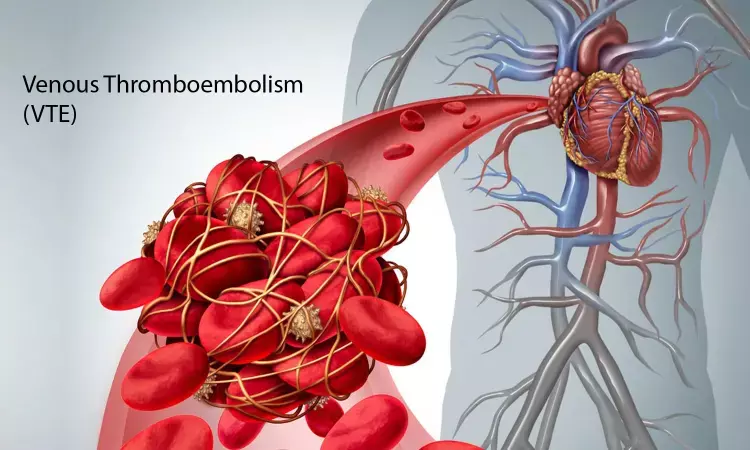- Home
- Medical news & Guidelines
- Anesthesiology
- Cardiology and CTVS
- Critical Care
- Dentistry
- Dermatology
- Diabetes and Endocrinology
- ENT
- Gastroenterology
- Medicine
- Nephrology
- Neurology
- Obstretics-Gynaecology
- Oncology
- Ophthalmology
- Orthopaedics
- Pediatrics-Neonatology
- Psychiatry
- Pulmonology
- Radiology
- Surgery
- Urology
- Laboratory Medicine
- Diet
- Nursing
- Paramedical
- Physiotherapy
- Health news
- Fact Check
- Bone Health Fact Check
- Brain Health Fact Check
- Cancer Related Fact Check
- Child Care Fact Check
- Dental and oral health fact check
- Diabetes and metabolic health fact check
- Diet and Nutrition Fact Check
- Eye and ENT Care Fact Check
- Fitness fact check
- Gut health fact check
- Heart health fact check
- Kidney health fact check
- Medical education fact check
- Men's health fact check
- Respiratory fact check
- Skin and hair care fact check
- Vaccine and Immunization fact check
- Women's health fact check
- AYUSH
- State News
- Andaman and Nicobar Islands
- Andhra Pradesh
- Arunachal Pradesh
- Assam
- Bihar
- Chandigarh
- Chattisgarh
- Dadra and Nagar Haveli
- Daman and Diu
- Delhi
- Goa
- Gujarat
- Haryana
- Himachal Pradesh
- Jammu & Kashmir
- Jharkhand
- Karnataka
- Kerala
- Ladakh
- Lakshadweep
- Madhya Pradesh
- Maharashtra
- Manipur
- Meghalaya
- Mizoram
- Nagaland
- Odisha
- Puducherry
- Punjab
- Rajasthan
- Sikkim
- Tamil Nadu
- Telangana
- Tripura
- Uttar Pradesh
- Uttrakhand
- West Bengal
- Medical Education
- Industry
Vein-Chip device may predict risk of deep vein thrombosis

DALLAS, May 5, 2020 — A miniaturized version of a large human vein called Vein-Chip device may predict risk of deep vein thrombosis (DVT).
The technology could also help researchers better understand how best to treat deep vein thrombosis and control or prevent blood clots that result in stroke or death.
The Vein-Chip device allowed scientists to study changes in vein wall cells, blood flow and other functions that lead to deep vein thrombosis (DVT) in humans.The preliminary research shall be presented at the American Heart Association's Vascular Discovery: From Genes to Medicine Scientific Sessions 2020.
The Vein-Chip is a translucent hollow chamber which serves as a miniature version of a human vein with similar architecture and cellular function. The chip allows researchers to test various human endothelial cells to differentiate various factors – gender, race, ethnicity and more – revealing which populations may have more or less DVT risk. In the end, the technology might allow for more personalized therapies for vein diseases.
"Within the Vein-Chip, we cultured endothelial cells retrieved from human veins that line all sides of the chamber and form a venous vessel. Blood drawn from participants was perfused via a syringe pump under the same physical conditions one would expect in a patient," said Abhishek Jain, Ph.D., lead study author and assistant professor of biomedical engineering at Texas A&M University's College of Engineering in College Station, Texas. "With this micro-chip, we simulated various functions, – and we could introduce toxins and medications to make the vein diseased and cured over time. We can also observe these processes to understand changes in gene and protein expression of the cells."
Three discoveries were made in this study of the Vein-Chip. Researchers found:
Under a normal healthy state, if a DVT risk factor like slowing blood flow occurs, the body might try to adapt by releasing anti-clotting factors. This adaptation happens within the vein pocket only and suggests that medications should be locally delivered at the site most affected by the disease.
Clot dissolving medications delivered through the vein do not always easily reach the clot in the vein pocket. This suggests new strategies are needed that could enhance the local transport of drugs to the vein pockets.
Human veins have pockets of different shapes, resulting in different extents of clotting, or thrombosis. As a result, venous architecture is an important DVT contributor.
Human veins consist of pockets that are one-way, pumping valves transporting blood from the legs to the heart. "It is in these pockets where blood flow can become unstable. The living cells, that line the walls, called endothelial cells, can switch from being normal to inflammatory. The inflammation results in clots that can then break apart, reach the small vessels of the lungs and brain and block the organ's blood supply, causing death from stroke," Jain said. "Venous pockets have been largely overlooked in venous thrombosis research, even though they are the primary sites of blood clot formation."
One of the challenges of research to develop technologies such as this is human trials can be conducted only after successful animal studies, according to Jain. "This is considered by many funding agencies to be a high-risk concept. Seeing a technology like this through to human studies requires a leap of faith among basic scientists, physicians, pharmaceutical companies, the FDA and funding agencies," he said.
Dr Kamal Kant Kohli-MBBS, DTCD- a chest specialist with more than 30 years of practice and a flair for writing clinical articles, Dr Kamal Kant Kohli joined Medical Dialogues as a Chief Editor of Medical News. Besides writing articles, as an editor, he proofreads and verifies all the medical content published on Medical Dialogues including those coming from journals, studies,medical conferences,guidelines etc. Email: drkohli@medicaldialogues.in. Contact no. 011-43720751


